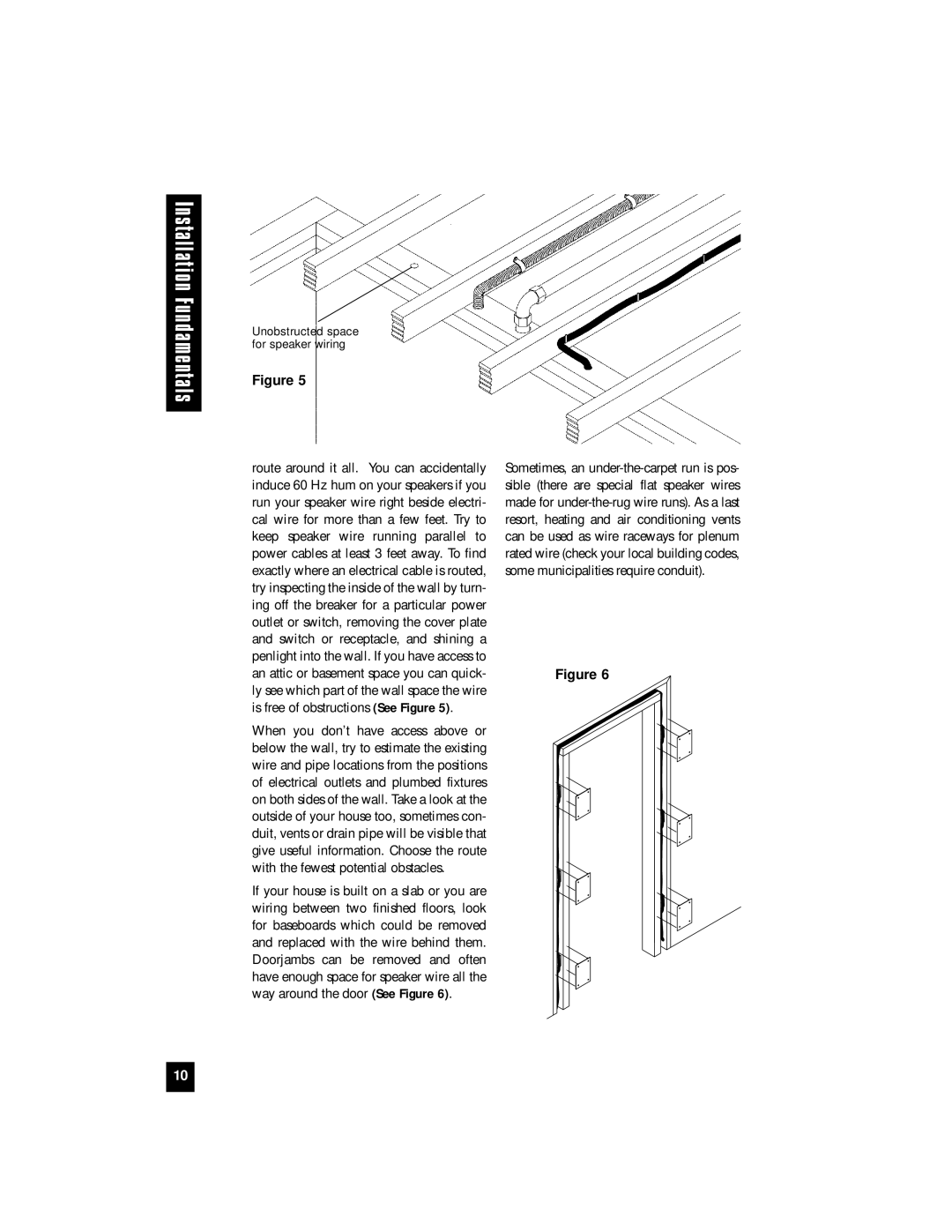
Installation Fundamentals
Unobstructed space for speaker wiring
Figure 5
route around it all. You can accidentally induce 60 Hz hum on your speakers if you run your speaker wire right beside electri- cal wire for more than a few feet. Try to keep speaker wire running parallel to power cables at least 3 feet away. To find exactly where an electrical cable is routed, try inspecting the inside of the wall by turn- ing off the breaker for a particular power outlet or switch, removing the cover plate and switch or receptacle, and shining a penlight into the wall. If you have access to an attic or basement space you can quick- ly see which part of the wall space the wire is free of obstructions (See Figure 5).
When you don’t have access above or below the wall, try to estimate the existing wire and pipe locations from the positions of electrical outlets and plumbed fixtures on both sides of the wall. Take a look at the outside of your house too, sometimes con- duit, vents or drain pipe will be visible that give useful information. Choose the route with the fewest potential obstacles.
If your house is built on a slab or you are wiring between two finished floors, look for baseboards which could be removed and replaced with the wire behind them. Doorjambs can be removed and often have enough space for speaker wire all the way around the door (See Figure 6).
Sometimes, an
Figure 6
10
